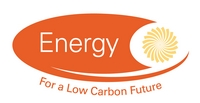Projects
Projects: Projects for Investigator |
||
| Reference Number | EP/V006746/1 | |
| Title | A Joined-up Approach for New Molecular Simulation Technologies To Harness Ultrafast Photochemistry | |
| Status | Started | |
| Energy Categories | Renewable Energy Sources(Solar Energy, Photovoltaics) 5%; Energy Efficiency(Residential and commercial) 5%; Not Energy Related 90%; |
|
| Research Types | Basic and strategic applied research 100% | |
| Science and Technology Fields | PHYSICAL SCIENCES AND MATHEMATICS (Physics) 50%; PHYSICAL SCIENCES AND MATHEMATICS (Applied Mathematics) 50%; |
|
| UKERC Cross Cutting Characterisation | Not Cross-cutting 100% | |
| Principal Investigator |
Professor MJ Paterson School of Engineering and Physical Sciences Heriot-Watt University |
|
| Award Type | Standard | |
| Funding Source | EPSRC | |
| Start Date | 01 February 2021 | |
| End Date | 31 January 2025 | |
| Duration | 48 months | |
| Total Grant Value | £524,400 | |
| Industrial Sectors | No relevance to Underpinning Sectors | |
| Region | Scotland | |
| Programme | NC : Physical Sciences | |
| Investigators | Principal Investigator | Professor MJ Paterson , School of Engineering and Physical Sciences, Heriot-Watt University (99.999%) |
| Other Investigator | Professor D Townsend , School of Engineering and Physical Sciences, Heriot-Watt University (0.001%) |
|
| Industrial Collaborator | Project Contact , Brown University (0.000%) |
|
| Web Site | ||
| Objectives | ||
| Abstract | Light triggers many important chemical reactions. These include photosynthesis, which converts sunlight to chemical energy and powers most life on earth, human vision, where light is detected using the light-induced isomerisation of a molecule in our retinas, and new technologies such as photodynamic therapies for cancer, photocatalysis, molecular photonics, photovoltaics, and organic light-emitting diodes in displays. Ultrafast imaging experiments that study these types of processes rely on computational modelling to interpret and analyse data and extract chemical and physical insight from the observations. Yet, the computational modelling remains very challenging, in essence because the photon ('light-particle') absorbed by a molecule in a photochemical process carries a large amount of energy, which forces the electrons and nuclei into complex coupled motion described by quantum mechanics, making computations exponentially more difficult than the corresponding system described by classical mechanics. The necessary calculations are composed of two different types of computations, which both require great technical expertise: electronic structure calculations and quantum dynamics.We will combine our expertise in electronic structure calculations and quantum dynamics, to create powerful new simulation methods. The team includes two world-leading experimentalists who are each expert in a complementary ultrafast imaging technique. As a team, we will push experiments and theory to achieve greater insight into complex light-activated dynamics in molecules. The project will provide a framework for interpreting multiple complementary state-of-the-art experiments. The long-term goal is to achieve simulations that are sufficiently powerful that we can use computers to design new photoactive molecules for new light-driven technologies. In the later stages of the project, we will tackle complex molecular systems well beyond the current cutting-edge of simulations, which will include exciting applications such as photosensitizers, photostabilizers, photoactive pro-drugs, photovoltaics, photocatalysts, and light-emitting diodes. | |
| Publications | (none) |
|
| Final Report | (none) |
|
| Added to Database | 13/07/21 | |



